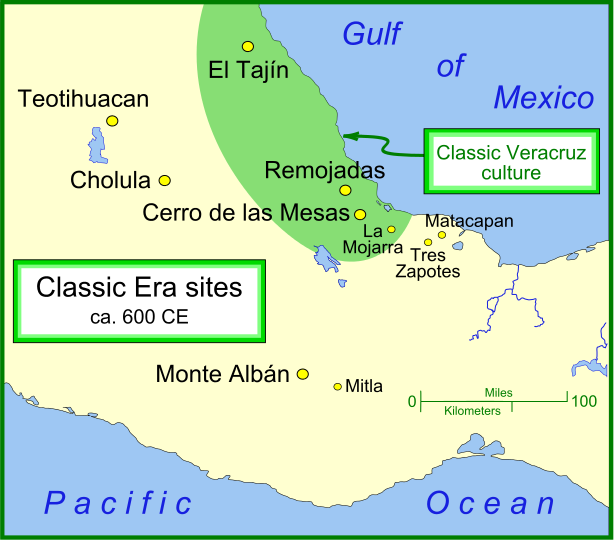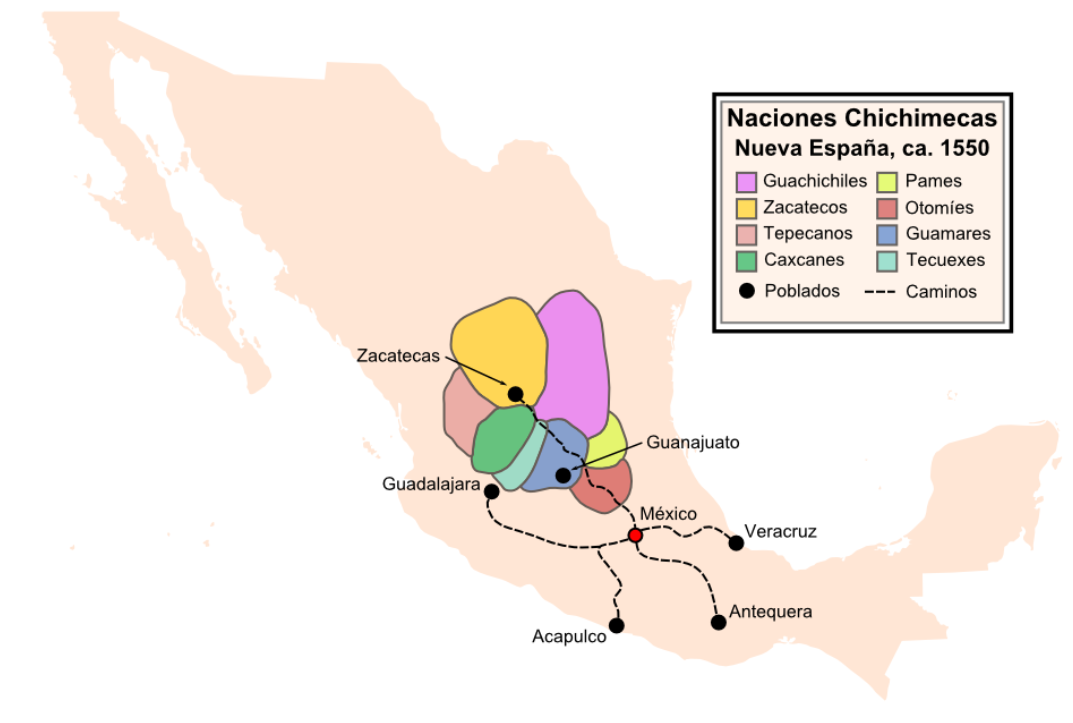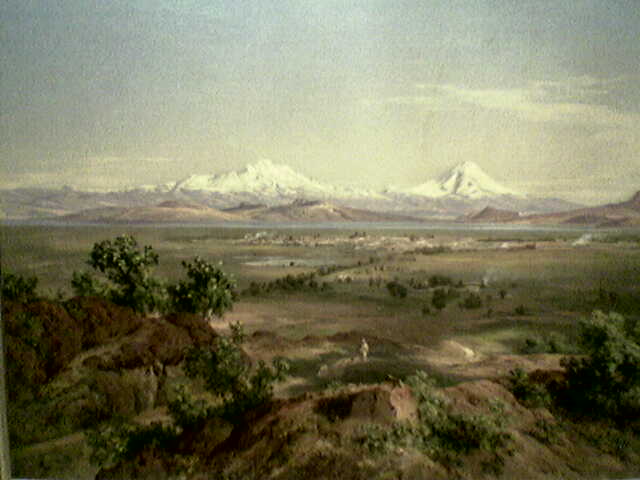|
Yohualichan
Yohualichan (''Yohualican'' or ''House of Night'' in Nahuatl) is a Pre-Columbian archaeological site located in Cuetzalan del Progreso in the Mexican state of Puebla. Yohualican and the larger nearby city of El Tajín both reached a cultural and political epoch during the Classic period and are both believed to have been constructed and populated by the Totonac people. With the end of the Classic Period, the nomadic Chichimecas begin migrating into the modern day Valley of Mexico The Valley of Mexico ( es, Valle de México) is a highlands plateau in central Mexico roughly coterminous with present-day Mexico City and the eastern half of the State of Mexico. Surrounded by mountains and volcanoes, the Valley of Mexico wa ... around the year 1200. From then on, Yohualican would come under pressure from these migratory tribes and would begin to fall into a gradual decline. References Archaeological sites in Puebla Mesoamerican sites {{Mexico-archaeology-stub ... [...More Info...] [...Related Items...] OR: [Wikipedia] [Google] [Baidu] |
Puebla
Puebla ( en, colony, settlement), officially Free and Sovereign State of Puebla ( es, Estado Libre y Soberano de Puebla), is one of the 32 states which comprise the Federal Entities of Mexico. It is divided into 217 municipalities and its capital is the city of Puebla. It is located in East-Central Mexico. It is bordered by the states of Veracruz to the north and east, Hidalgo, México, Tlaxcala and Morelos to the west, and Guerrero and Oaxaca to the south. The origins of the state lie in the city of Puebla, which was founded by the Spanish in this valley in 1531 to secure the trade route between Mexico City and the port of Veracruz. By the end of the 18th century, the area had become a colonial province with its own governor, which would become the State of Puebla, after the Mexican War of Independence in the early 19th century. Since that time the area, especially around the capital city, has continued to grow economically, mostly through industry, despite being the scene o ... [...More Info...] [...Related Items...] OR: [Wikipedia] [Google] [Baidu] |
El Tajín
El Tajín is a pre-Columbian archeological site in southern Mexico and is one of the largest and most important cities of the Mesoamerican chronology, Classic era of Mesoamerica. A part of the Classic Veracruz culture, El Tajín flourished from 600 to 1200 CE and during this time numerous temples, palaces, Mesoamerican ballcourt, ballcourts, and pyramids were built. From the time the city fell, in 1230, to 1785, no European seems to have known of its existence, until a government inspector chanced upon the Pyramid of the Niches. El Tajín, named after the Totonac rain god, was named a World Heritage site in 1992, due to its cultural importance and its architecture. This architecture includes the use of decorative niches and cement in forms unknown in the rest of Mesoamerica. Its best-known monument is the Pyramid of the Niches, but other important monuments include the Arroyo Group, the North and South Ballcourts and the palaces of Tajín Chico. In total there have been 20 ball ... [...More Info...] [...Related Items...] OR: [Wikipedia] [Google] [Baidu] |
Zona Arqueológica De Yohualichan
The red-tailed silverside, or zona (''Bedotia geayi'') is a species of Madagascar rainbowfish endemic to the Mananjary River drainage in Madagascar. It is threatened by habitat loss and introduced species. It has often been confused with the related '' B. madagascariensis'', which is common in the aquarium trade.SeriouslyFish: Bedotia madagascarensis.' Retrieved 3 July 2014.Loiselle, P.V.; and Rodriguez, D. (2007). ''A new species of Bedotia (Teleostei: Atherinomorpha: Bedotiidae) from the Rianila drainage of Eastern Madagascar, with redescriptions of Bedotia madagascariensis and Bedotia geayi.'' Zootaxa 1520: 1-18. In addition to meristics, the two can be separated by the exact colour pattern on their tail fin (males of both typically have red in the tail) and the distinct red spot on the lower jaw of breeding male ''B. geayi'' (lacking in ''B. madagascariensis''). ''B. geayi'' was described in 1907 by Jacques Pellegrin from a type collected by the pharmacist and natural histor ... [...More Info...] [...Related Items...] OR: [Wikipedia] [Google] [Baidu] |
Nahuatl
Nahuatl (; ), Aztec, or Mexicano is a language or, by some definitions, a group of languages of the Uto-Aztecan language family. Varieties of Nahuatl are spoken by about Nahua peoples, most of whom live mainly in Central Mexico and have smaller populations in the United States. Nahuatl has been spoken in central Mexico since at least the seventh century CE. It was the language of the Aztec/ Mexica, who dominated what is now central Mexico during the Late Postclassic period of Mesoamerican history. During the centuries preceding the Spanish and Tlaxcalan conquest of the Aztec Empire, the Aztecs had expanded to incorporate a large part of central Mexico. Their influence caused the variety of Nahuatl spoken by the residents of Tenochtitlan to become a prestige language in Mesoamerica. After the conquest, when Spanish colonists and missionaries introduced the Latin alphabet, Nahuatl also became a literary language. Many chronicles, grammars, works of poetry, administrative docu ... [...More Info...] [...Related Items...] OR: [Wikipedia] [Google] [Baidu] |
Pre-Columbian Era
In the history of the Americas, the pre-Columbian era spans from the Migration to the New World, original settlement of North and South America in the Upper Paleolithic period through European colonization of the Americas, European colonization, which began with Christopher Columbus's voyage of 1492. Usually, the era covers the history of Indigenous peoples of the Americas, Indigenous cultures until significant influence by Europeans. This may have occurred decades or even centuries after Columbus for certain cultures. Many pre-Columbian civilizations were marked by permanent settlements, cities, agriculture, civic and monumental architecture, major earthworks (archaeology), earthworks, and Complex society, complex societal hierarchies. Some of these civilizations had long faded by the time of the first permanent European colonies (c. late 16th–early 17th centuries), and are known only through archaeology of the Americas, archaeological investigations and oral history. Other civi ... [...More Info...] [...Related Items...] OR: [Wikipedia] [Google] [Baidu] |
Cuetzalan Del Progreso (municipality)
Cuetzalan del Progreso Municipality is a municipality in Puebla in south-eastern Mexico Mexico (Spanish: México), officially the United Mexican States, is a country in the southern portion of North America. It is bordered to the north by the United States; to the south and west by the Pacific Ocean; to the southeast by Guatema .... References {{coord, 20, 02, N, 97, 31, W, display=title, region:MX_type:city_source:GNS-enwiki Municipalities of Puebla ... [...More Info...] [...Related Items...] OR: [Wikipedia] [Google] [Baidu] |
Classic Period
Mesoamerican chronology divides the history of prehispanic Mesoamerica into several periods: the Paleo-Indian (first human habitation until 3500 BCE); the Archaic (before 2600 BCE), the Preclassic or Formative (2500 BCE – 250 CE), the Classic (250–900 CE), and the Postclassic (); as well as the post European contact Colonial Period (1521–1821), and Postcolonial, or the period after independence from Spain (1821–present). The periodisation of Mesoamerica by researchers is based on archaeological, ethnohistorical, and modern cultural anthropology research dating to the early twentieth century. Archaeologists, ethnohistorians, historians, and cultural anthropologists continue to work to develop cultural histories of the region. Overview Paleo-Indian period 10,000–3500 BCE The Paleo-Indian (less frequently, '' Lithic'') period or era is that which spans from the first signs of human presence in the region, to the establishment of agricult ... [...More Info...] [...Related Items...] OR: [Wikipedia] [Google] [Baidu] |
Totonac People
The Totonac are an indigenous people of Mexico who reside in the states of Veracruz, Puebla, and Hidalgo. They are one of the possible builders of the pre-Columbian city of El Tajín, and further maintained quarters in Teotihuacán (a city which they claim to have built). Until the mid-19th century they were the world's main producers of vanilla. Etymology The term "totonac" refers to the people living in Totonacapan. There is no agreement as to the origin of the term. Some authors have translated the term "totonac" as a Nahuatl word meaning "People of Hot Land". The translation for this word in the Totonac Language, according to sources, is "toto-nacu" meaning "three hearts" signifying their three cities or cultural centers: Cempoala, Tajin and Teayo. Evidence, however, is inconclusive. Geography and traditional lifestyle In the 15th century, the Aztecs labeled the region of the Totonac "Totonacapan"; which then extended roughly from Papantla in the north to Cempoala in ... [...More Info...] [...Related Items...] OR: [Wikipedia] [Google] [Baidu] |
Chichimeca
Chichimeca () is the name that the Nahua peoples of Mexico generically applied to nomadic and semi-nomadic peoples who were established in present-day Bajio region of Mexico. Chichimeca carried the meaning as the Roman term "barbarian" that described Germanic tribes. The name, with its pejorative sense, was adopted by the Spanish Empire. For the Spanish, in the words of scholar Charlotte M. Gradie, "the Chichimecas were a wild, nomadic people who lived north of the Valley of Mexico. They had no fixed dwelling places, lived by hunting, wore little clothes and fiercely resisted foreign intrusion into their territory, which happened to contain silver mines the Spanish wished to exploit." In spite of not having temples or idols, they practiced animal sacrifice, and they were feared for their expertise and brutality in war. The Spanish invasion resulted in a "drastic population decline of all the peoples known collectively as Chichimecas, and to the eventual disappearance as peoples ... [...More Info...] [...Related Items...] OR: [Wikipedia] [Google] [Baidu] |
Valley Of Mexico
The Valley of Mexico ( es, Valle de México) is a highlands plateau in central Mexico roughly coterminous with present-day Mexico City and the eastern half of the State of Mexico. Surrounded by mountains and volcanoes, the Valley of Mexico was a centre for several pre-Columbian civilizations, including Teotihuacan, the Toltec, and the Aztec. The ancient Aztec term ('Land Between the Waters') and the phrase Basin of Mexico are both used at times to refer to the Valley of Mexico. The Basin of Mexico became a well known site that epitomized the scene of early Classic Mesoamerican cultural development as well. The Valley of Mexico is located in the Trans-Mexican Volcanic Belt. The valley contains most of the Greater Mexico City, Mexico City Metropolitan Area, as well as parts of the State of Mexico, Hidalgo (state), Hidalgo, Tlaxcala, and Puebla. The Basin of Mexico covers approximately in the NNE-SSW direction with length to width dimensions of approximately to The Valley of ... [...More Info...] [...Related Items...] OR: [Wikipedia] [Google] [Baidu] |
Máscaras Yohualichan
''Máscaras'' ( en, Masks) is a Brazilian telenovela produced and broadcast by RecordTV. Created by Lauro César Muniz. It premiered on April 4, 2012 and ended on October 2, 2012. Plot Otávio is a thriving cattle breeder in Mato Grosso do Sul. And he falls in love with Maria, a young woman from the big city. The two marry, Maria will live on the farm next to her husband, have a baby and then suffer postpartum depression. To be treated, she embarks on a therapeutic ship, created by the alternative doctor Dr. Décio. Maria returns to her husband's farm, but is kidnapped along with her son, Tavinho. Otávio decides to start life with another identity, but he does not go to great lengths to find the family. He discovers that the kidnapping has to do with a criminal organization led by Big Blond, and goes on to investigate the crime. Only time passes and, without enduring the weight of the disappearance of his loved ones, the farmer goes into depression. Dr. Decio then receives an an ... [...More Info...] [...Related Items...] OR: [Wikipedia] [Google] [Baidu] |
Archaeological Sites In Puebla
Archaeology or archeology is the scientific study of human activity through the recovery and analysis of material culture. The archaeological record consists of Artifact (archaeology), artifacts, architecture, biofact (archaeology), biofacts or ecofacts, archaeological site, sites, and cultural landscapes. Archaeology can be considered both a social science and a branch of the humanities. It is usually considered an independent academic discipline, but may also be classified as part of anthropology (in North America – the four-field approach), history or geography. Archaeologists study human prehistory and history, from the development of the first stone tools at Lomekwi in East Africa 3.3 million years ago up until recent decades. Archaeology is distinct from palaeontology, which is the study of fossil remains. Archaeology is particularly important for learning about prehistoric societies, for which, by definition, there are no written records. Prehistory includes ove ... [...More Info...] [...Related Items...] OR: [Wikipedia] [Google] [Baidu] |


.png)



.jpg)